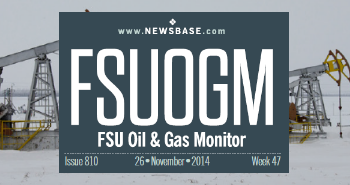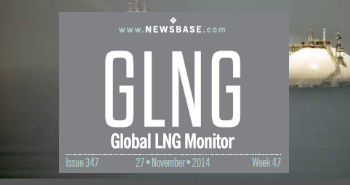Houthi rebels vow not to target Russian ships despite two accidental attacks on tankers

Houthi rebels have vowed not to target Russian ships passing through the Red Sea, potentially shielding both countries from some of the fallout on international trade caused by the crisis.
The pledge, made by Muhammad al-Bakhiti, a member of the Ansar Allah (Houthi) political bureau, came just a week after Houthi militants mistakenly targeted a tanker laden with Russian crude in a missile attack off Yemen on January 12, according to British maritime security firm Ambrey. This was the second such attack on a tanker carrying Russian oil, the firm said.
Houthi rebels have launched waves of attacks on Western commercial vessels in the Red Sea since late November – a campaign they say is a response to Israel’s military operations in Gaza. The US and the UK retaliated by conducting a series of strikes from the air and sea against Houthi military targets earlier this month.
Russia, which is allied with Iran and has sought to strengthen its ties with key Arab powers in recent years, denounced the UK-US strikes.
According to Ambrey, the second Russian tanker was mistakenly targeted because outdated publicly available information linked the ship to the UK. The vessel was still listed as UK-affiliated on a public maritime database.
"As far as ships from all other countries, including Russia and China, are concerned, their navigation in the region is not under any threat whatsoever," al-Bakhiti said in an interview with Russia’s Izvestia daily. “Moreover, we are ready to ensure the safety of their journey across the Red Sea, because the freedom of navigation plays an important role for our country.”
Massive rerouting of trade
The Red Sea attacks have led to massive rerouting of shipping to the Cape of Good Hope – at the end of December as much as half of trade had been diverted to that route. For the time being, the crisis has not had a fundamental impact on oil and LNG supply. Oil prices spiked in early January, with Brent reaching $94 per barrel, but the benchmark has since settled below $80. LNG prices likewise leapt up on supply risk fears before returning to pre-crisis levels.
Still, should the strikes continue, this will spell long-term volatility, as the IEA has recently warned. Red Sea oil flow is significant – around 12% of total global seaborne oil trade goes through the sea – including both crude oil and refined products. These cargoes were sent northward towards the Mediterranean and Europe and southward for shipment to Asia. An even bigger risk is that the situation escalates and leads to disruptions to oil flow via the Strait of Hormuz, which handles trade that is equivalent to around a fifth of global oil consumption. The only Middle Eastern oil exporters that have the capacity to avoid Hormuz are Saudi Arabia and the UAE and Oman, which between them could export around 6.5mn barrels per day (bpd) of oil via alternative pipeline routes, according to ING.
Likewise the Red Sea has grown in importance in recent years as a major trade route for LNG – around 8% of global supplies of the super-chilled fuel now passes through the region. Growing volumes of US LNG flow through the sea on route to Asia, on the back of rising US production, particularly in light of constraints to shipping through the Panama Canal as a result of low water levels. Increased traffic has also been supported by rising European LNG imports, following the continent’s loss of most of its Russian pipeline gas supply in the wake of Moscow’s invasion of Ukraine.
Qatar is now the largest supplier of LNG to Europe, and naturally relies primarily on the Red Sea to reach the market. In 2023, it sent just over 20 bcm of LNG to Europe – equivalent to 16% of the continent’s total imports. Oman and the UAE also deliver marginal volumes to Europe via this route.
QatarEnergies reported on January 15 that it was rerouting its LNG exports to the lengthier passage via the Cape of Good Hope, only to resume Red Sea shipments several days later.
Risks to Russian trade
Despite unprecedented Western sanctions on Russian oil trade, the country’s export levels have remained robust over the past two years, as the country has successfully diverted a lot of the crude it used to send to Europe to Asian markets – namely India and China. To achieve this, Russia has had to rely more on seabound trade, as its extensive Druzhba pipeline connecting it with European markets is now greatly underutilised following the EU’s introduction of an embargo on most Russian crude supply. But this places the country at risk of increased global chokepoints. Besides the Red Sea attacks and the risks posed in the Strait of Hormuz, as noted the Panama canal is suffering drought as a result of climate change, forcing authorities to slash ship crossings by 36%. Notably, though, Russian ships hardly ever need to use this route for trade.
While assurances by Houthi rebels that Russian trade will not be intentionally targeted in the Red Sea will be welcomed by Moscow, the two accidental attacks on tankers show that there is still a risk. Critically, this risk is tied to the fact that Russia has sought to reduce the impact of sanctions on its oil trade by resorting to the use of a large shallow fleet of ships, whose ownership is typically opaque and which frequently change their vessel names and flag registrations. These vessels also switch off their tracking systems to obscure their locations.
In other words, Russia’s successful efforts to bypass Western sanctions may be the very thing that increases risk of mistaken Houthi attacks in the Red Sea.





Follow us online